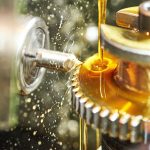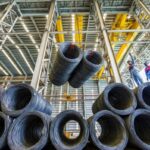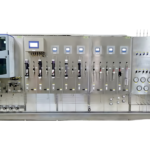Lubrication plays a vital role in ensuring machinery’s smooth, efficient, and durable operation. However, traditional manual lubrication methods come with many risks and limitations. In this article, we will discuss why automatic lubrication is considered a necessity rather than an option. Here are five reasons why automatic lubrication is highly valuable.
Optimal lubrication
Proper equipment maintenance extends the lifespan of components, increases performance and productivity, and reduces repair costs. Precise and reliable lubrication is the most important preventive maintenance step for protecting the life and productivity of any fleet.
Automatic lubrication systems provide consistent lubrication more frequently than manual lubrication. Too little lubrication generates heat and wear, while too much can create drag, heat, wear, and damage seals.
Ideal machine and vehicle performance require maintaining a thin lubricant film to separate moving surfaces at all speeds and loads. For most grease applications, the required amount is an average thickness of 0.001 inches (1/1000 inch) of surface area, applied every four hours. For oil applications, the same thickness is applied hourly. Even with an acceptable variance range of +/- 20%, achieving this film thickness with manual application is nearly impossible. However, this is an easy task for measurement devices in modern automatic lubrication systems.
Environmentally friendly
Environmental concerns are another factor. First, a better-lubricated machine is more energy-efficient, benefiting the environment and business. Secondly, most lubricants are derived from the same crude oil used to produce fossil fuels, so using less lubricant is better for the environment. Automatic lubrication applies less lubricant but more frequently, minimizing waste and thus protecting the environment.
Dependable and reliable
Reliability is always a critical issue. Manual lubrication plans can lead to occasional missed points or complete forgetfulness until something breaks. With automatic lubrication, you can trust that the correct amount of lubrication will reach important shafts, bearings, and joints at the appropriate frequency. Automatic lubrication systems also offer system monitoring options, alerting you to issues with the lubricant supply.
Reduced contamination
Under many operating conditions, natural contaminants can negatively affect lubrication points and cause significant wear, especially when using manual lubrication methods. Often, lubrication points are not properly cleaned before manual lubrication, and the nozzle used to connect to the point is often dirty. Contaminants such as chemicals, rock, sand, and other particles are then forced into the lubrication point. With automatic lubrication, grease is pumped through a filter before entering the lubricant reservoir, limiting the ingress of contaminants into these lubrication points.
Automatic lubrication equals safer operation
The ideal time to lubricate a bearing is while it is in motion, which is unsafe for those applying the lubricant. Lubrication points are often in hard-to-reach locations, potentially placing technicians or operators in hazardous situations. Automatic lubrication provides a safer method for delivering the necessary lubrication.
Progressive lubrication systems are modern systems designed to deliver the right amount and type of lubricant at the right time, optimizing maintenance and protecting machine components. With high automation, the system ensures that each lubrication point is handled precisely and efficiently, helping extend the components’ lifespan, increase performance, and reduce repair costs. Progressive lubrication systems enhance safety and reliability in production operations and minimize negative impacts on the work environment and natural environment. Additionally, the system’s flexible scalability and easy upgradability are noteworthy features that optimize operation and maintenance processes for the future. Optimally lubrication is ensured by applying the right amount of clean lubricant at regular intervals and monitoring the performance of the lubrication system.
Protect your equipment and your staff by using automatic lubrication in your operations.






